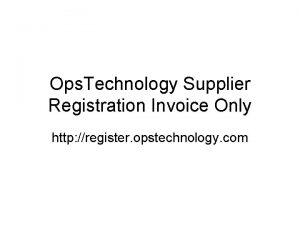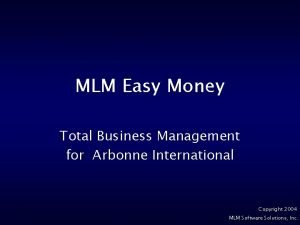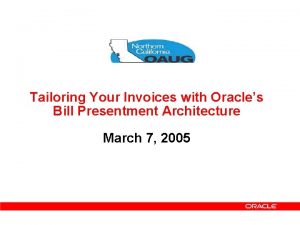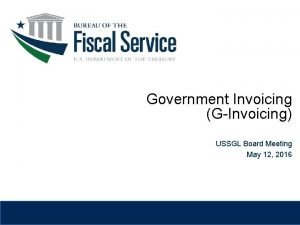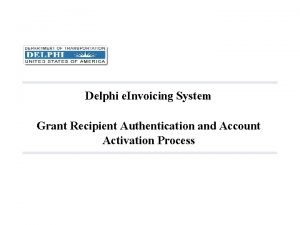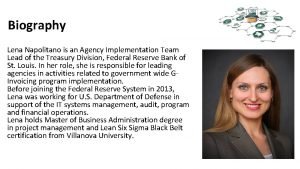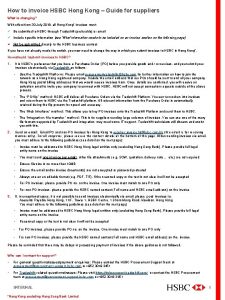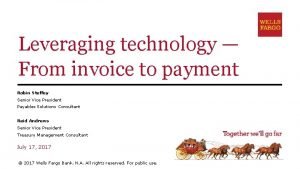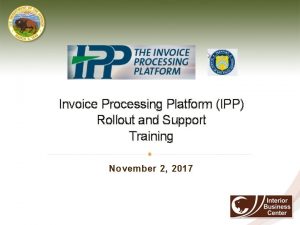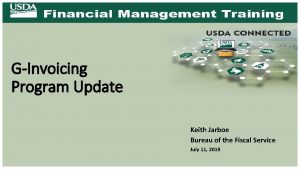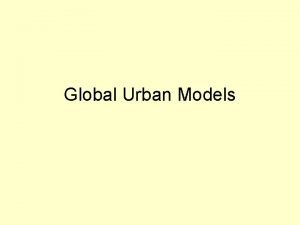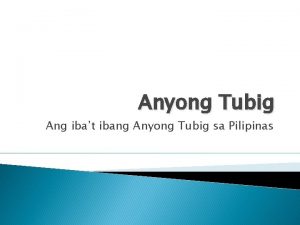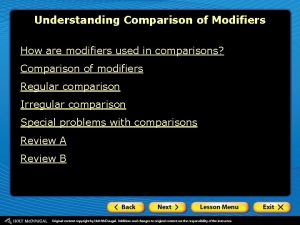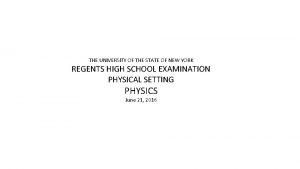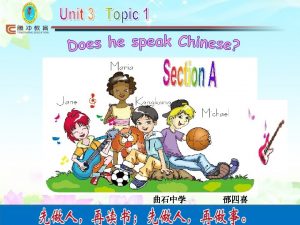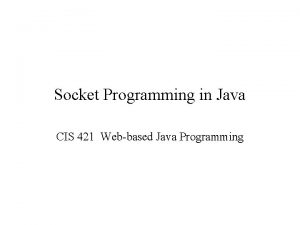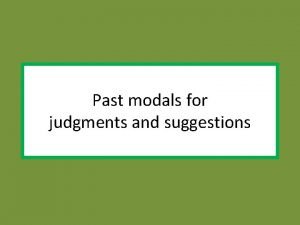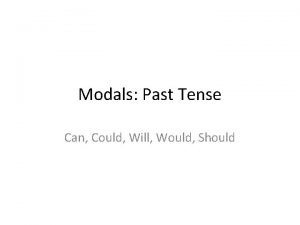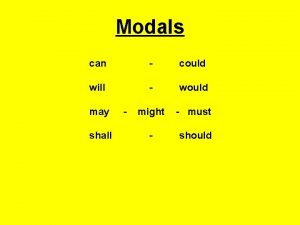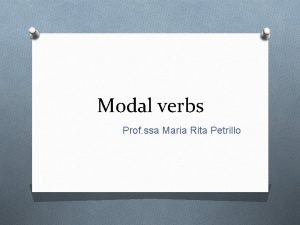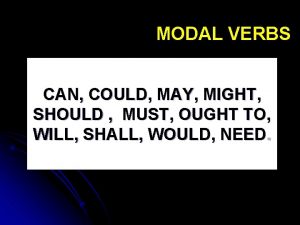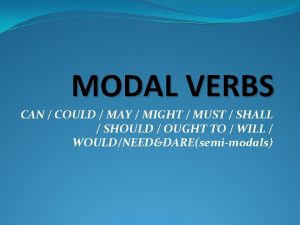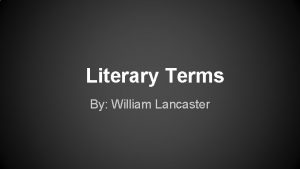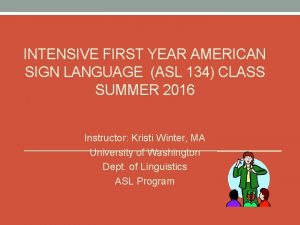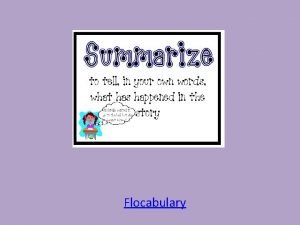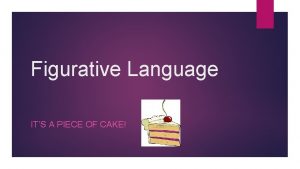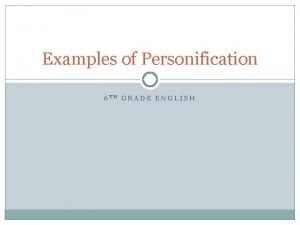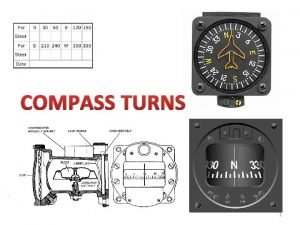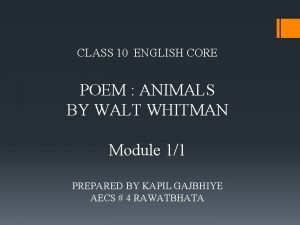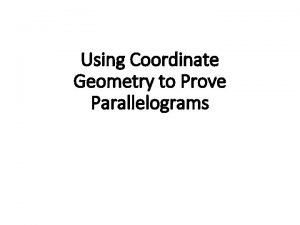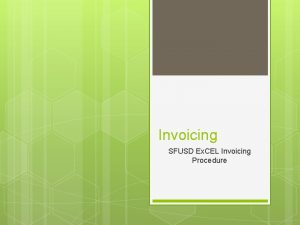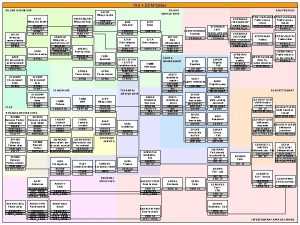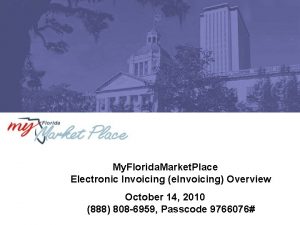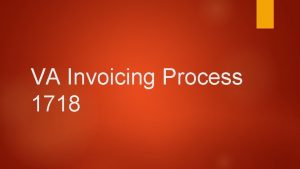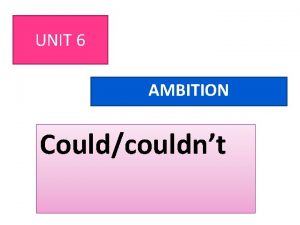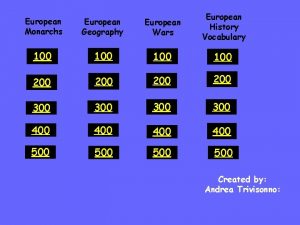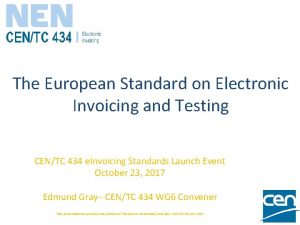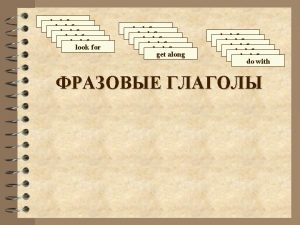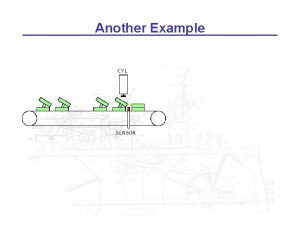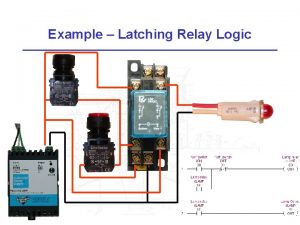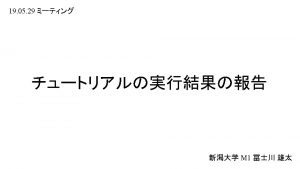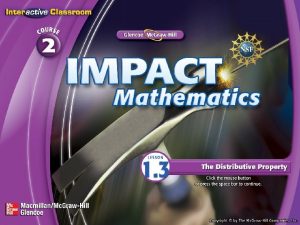European e Invoicing example WHAT IT COULD LOOK


















































- Slides: 50

European e. Invoicing example WHAT IT COULD LOOK LIKE 1

european e. Invoicing example UN/CEFACT Foc us o e. Invoice Governance Communities Core Interoperable Foundation Library Implementations nt his o Pr UN/CEFACT Procurement domain s e fil BII P rofiles Business. Ob jects ISO 20022 Universal financial industry message scheme Message definition 2

using a ‘core’ semantic reference for e. Invoicing a European Profile ‘core’ ‘Supplier initiated Invoice’ ‘identifier’ ‘date’ ‘currency’ ‘rate’ ‘party’ ‘location’ ‘item’ ‘document’ ‘period’ ‘address type’ ‘address details’ business process models Used in data models and code lists Used in data structures Used in syntax expression Used in ‘billing process’ ‘common procurement library’ ‘invoice ICE O transaction V n IN a e requirements’ rop el ? d u E o E m COR data ‘invoice syntax mapping’ 3

maintained by ‘core’ models UN/CEFACT Procurement domain UN/CEFACT Bureau Programme Support ‘supplier initiated Invoice’ ‘identifier’ ‘date’ ‘currency’ ‘rate’ ‘party’ ‘location’ ‘item’ ‘document’ ‘period’ ‘address’ business process models Used in data models and code lists Used in data structures Used in XML format ‘address type’ ‘address details’ Used in EDIFACT format Used in 4

The role of CEN/BII specifications • BII is defining core information requirement models – the set of information elements sufficient to cater for the generally expressed business requirements applicable throughout the European market. BII • BII offers an approach to e. Invoicing interoperability within Europe. 5

the CEN/BII European Profile business process models Used in data models and code lists Used in data structures Used in XML format Used in ‘billing process’ ‘common procurement library’ ‘invoice ICE transaction O V n IN a e p requirements’ Euro odel ? E R CO data m ‘invoice format mapping’ maintained by CEN/BII UN/CEFACT and OASIS UBL CEN/BII 6

European e. Invoicing example HOW IT COULD WORK 7

using ‘core’ semantics Can we speak in English ? 8

a human analogy • English is the business language of the global village but we risk getting lost in translation. – Foundation library is large, complex and ambiguous • Globish is a ‘core’ controlled vocabulary for humans – A “lingua franca” or bridging language. – A “core” English. – Provides a semantic reference. • Globish allows you to: – – – Communicate in English, using only 1500 words. Employ simple, but standard grammatical structure. Learn enough pronunciation and spelling for 1500 words only. Lead a conversation in business anywhere in the world. Agree common semantics. Continue to speak local languages within each community. 9

using a ‘core’ semantic reference Globish* Dictionary Globish-Hungarian Dictionary tartozol nekem 100 $ “you owe me $100” Globish-Italian Dictionary tu mi debba 100 $ cate i n u m to com agreed n a m r e For a G alian they use sh It bi with an s based on Glo phrase ctionary Di semantically equivalent her t o h c a y to e a s e w t ative n wha f o s s e l (regard e) languag Globish-German Dictionary du schuldest mir 100 $ 10

European Invoice Semantics UN/CEFACT Core Interoperable Foundation Library E OIC V N I ean ? p o r del E Eu COR data mo European Common Invoice requirements ice o v n LI UB Fina e ic o v n Cro I y r t us d n ss I ncia equiva y l l a c i t n a sem l Inv oice lent 11

Globish Semantic References Globish* Dictionary n aria g Hun I nce e t sen a tali en ns ce n e t Globish phrase an to For a Germ th an e wi t a c i n u m com e agreed s u y e h t n Italia Globish n o d e s a b phrases Dictionary Ger ma n se nte nce 12

European Invoice Semantics European Common Invoice requirements ice o v n LI UB e ic o v n I y r t us d n ss I Cro UN/CEFACT Core Interoperable Foundation Library y using t i n u m m For a co hange c x e o t e Invoic Financial sing UBL u y t i n u mm opean r with a co u E e s u they n CIFL o Invoice d e s a b hrases p e c i o v n I Fina ncia l Inv oice 13

Sample BII (UBL) Invoice Document <? xml version="1. 0" encoding="UTF-8"? > <Invoice xmlns: qdt="urn: oasis: names: specification: ubl: schema: xsd: Qualified. Datatypes-2" xmlns: ccts="urn: oasis: names: specification: ubl: schema: xsd: Core. Component. Parameters-2” ore C f o xmlns: cbc="urn: oasis: names: specification: ubl: schema: xsd: Common. Basic. Components-2" Use perable y ar ro xmlns: cac="urn: oasis: names: specification: ubl: schema: xsd: Common. Aggregate. Components-2" Inte ion Libr xmlns: ciflc="urn: unece: uncefact: data: draft: CIFLComponents" dat n u Fo xmlns: cifls="urn: unece: uncefact: data: draft: CIFLStructures" xmlns="urn: oasis: names: specification: ubl: schema: xsd: Invoice-3"> <cac: Accounting. Supplier. Party> <cac: Party. Name> <cbc: Name>Salescompany ltd. </cbc: Name> Extension of </cac: Party. Name> ifls: Address c <cac: Postal. Address> <ciflc: ID scheme. ID="GLN" scheme. Agency. ID="9">1231412341324</ciflc: ID> <cbc: Postbox>5467</cbc: Postbox> <ciflc: Street. Name>Main street</ciflc: Street. Name> <cbc: Building. Number>1</cbc: Building. Number> <ciflc: City. Name>Big city</ciflc: City. Name> <cbc: Postal. Zone>54321</cbc: Postal. Zone> <cbc: Country. Subentity. Code>Region. A</cbc: Country. Subentity. Code> <cifls: Country> <ciflc: Identification. Code list. ID="ISO 3166 -1" list. Agency. ID="6”>DK</ciflc: Identification. Code> </cifls: Country> 14 NB. not valid syntax </cac: Postal. Address>

Sample Financial Invoice Document <? xml version="1. 0" encoding="UTF-8"? > ore C f o <Document xmlns: xsi="http: //www. w 3. org/2001/XMLSchema-instance" Use perable ry o ra xsi: schema. Location="urn: swift: xsd: tsin. 004. 001. 01. xsd" Inter ion Lib at d n xmlns: ciflc="urn: unece: uncefact: data: draft: CIFLComponents" Fou xmlns: cifls="urn: unece: uncefact: data: draft: CIFLStructures” xmlns="urn: swift: xsd: tsin. 004. 001. 01”> <Fin. Invc> <Buyr> <Pty. Id> f <Nm>Finnish Timber Ltd</Nm>Extension o cifls: Address <Pstl. Adr> <Adr. Tp>BIZZ</Adr. Tp> <ciflc: Street. Name>Timber street 3</ciflc: Strt. Nm> <Pst. Cd>00100</Pst. Cd> <ciflc: City>Helsinki</ciflc: City <ciflc: County>FI</ciflc: Country> </Pstl. Adr> <Ctry. Of. Res>FI</Ctry. Of. Res> </Pty. Id> </Buyr> </Fin. Invc> 15 </Document> NB. not valid syntax

European e. Invoice exchange UN/CEFACT Core Interoperable Foundation Library y it n u om m LC O P EP P ity n u m Sp om C h anis European Common Invoice r to e b m requirements e ym t i n u m m ish o n c a g p n S i k a n For a ba e invoices with ansform exchang on- they can tr Invoice ti a z i ean n p a o g r u or E ed s g a n i b s , u ) I I s -B nt e N E m C u c y o b d Ban ed n i f e d L ( kin F s I c C i t T n C g. C a A m EF se C / om N U on mu nit y equiva y l l a c i t n a sem lent 16

UN/CEFACT Revised Technical Framework POTENTIAL IMPACT ON UN/CEFACT PROGRAMME OF WORK 17

potential impact on programme of work • UN/CEFACT projects will develop Profiles – – – – ‘Deliverables for Information’ rather then ‘Standards’ ‘core’ industry rather than ‘cross’ industry Generic semantics rather than documents, syntax or formats Similar, but not same as BRS and RSM Processes, rules and requirements Formalized business rules Semantic reference models • Other activities… – Develop guidelines • Assist in implementation support – Develop UNECE Recommendations • Such as Recommendations to use certain specifications or standards • As with EDIFACT, Layout Key, Codes, etc. . – Attract more business expertise 18

what happens to current libraries? UN/CEFACT Core Interoperable Foundation Library Governance Communities (stakeholders of libraries) Implementations Core Components Library 2. 01 Community Core Components Library 3. 0 Community UN/EDIFACT Community UNTDED-ISO 7372 Community Note: libraries are developed and approved by communities of use A B C D 19

what happens to current BRSs? UN/CEFACT Core Interoperable Foundation Library UN/CEFACT Projects (approved by Bureau) Sectoral PDA Agriculture Domain • e. Cert • Crop Data Sheet • E-Lab Supply Chain PDA Procurement Domain • BRSs developed as Profiles and approved by projects • Registered with self conformance in a UN/CEFACT repository • Published as UN/CEFACT Deliverables for Information • CI-* • CEFM • e. Tendering 20

what happens to current RSMs? UN/CEFACT Core Interoperable Foundation Library Governance Communities (stakeholders of current deliverables) Agriculture Industry Group Agriculture Domain • e. Cert (RSM) • Crop Data Sheet (RSM) Core Components Library 2. 01 Procurement Industry Group • CII (RSM) Core Components Library 3. 0 Implementations community A community X • CEFM (RSM) • e. Tendering (RSM) • Specific technical specifications (such as RSM and Schemas) are developed and approved by governance communities • May be registered in a UN/CEFACT repository under a self conformance statement as publications based on UN/CEFACT foundation library 21

summary • (proposed) Revised Technical Framework: • Standardize on semantics not syntax or formats • UN/CEFACT ‘core’ semantics establish foundation for interoperability • Communities of use create their own implementations • Process, components, structures, documents and syntax • Statement of conformance • Registry of conformant specifications published by UN/CEFACT • UN/CEFACT is a facilitator of interoperability between communities • UN/CEFACT impact: • UN/CEFACT projects will develop… • Profiles for e. Procurement processes • Business requirements, rules and semantics • Published as Deliverables for Information • Recommendation for use of standards • Communities (e. g. CEN/BII) develops … • European core Invoice Data Model • European business requirements, rules and semantics 22

UN/CEFACT Revised Technical Framework WHAT NEEDS TO HAPPEN 23

ISO/PDTR 18689 Technical Report • • • Scope Terms and definitions Symbols and abbreviated terms Scope of involved organizations Current work programs Identified issues Analysis The "Open Data Interchange Framework” Recommendations

Scope • This Technical Report identifies technical specifications and standards that are being maintained, developed or given consideration in work programmes of UN/CEFACT and ISO/TC 154 and strategies that respond to stakeholder requirements for the open interchange of structured data in support of administration, commerce and trade. This may include work from Standards Development Organizations (SDOs) other than ISO and the United Nations Economic Commission for Europe (UNECE).

Areas of Activity Classification Matrix

Areas of Standardization matrix

Tools: Techniques and Methodologies

Tools: Naming and Design Rules

Tools: Interoperability

Information: Data Dictionaries and Models

Information: Document Definitions

Information: Message Protocols/Syntax

Activities: Business Process Models

Activities: Profiles

Guidance: Business Requirements

Guidance: Usage Guidelines

Guidance: Interoperability Requirements

Identified Issues 1. 2. 3. 4. 5. 6. 7. 8. 9. 10. 11. 12. 13. 14. ISO TS 15000 Parts 1 -4 are out of date with OASIS standards Gap in maintenance, harmonization and validation procedures for dependent work items Need to improve public communication to user communities Perceived lack of collaboration between ECE/IEC/ISO/ITU Limited awareness and/or acceptance of UN/CEFACT and ISO/TC 154 deliverables Need to improve collaboration on digital signature interoperability Restricted availability of Postal Addressing Specifications for use in e. Business Need to improve the timing of UN/EDIFACT directory and code list releases Confusion on multiple versions of Core Component Technical Specification Lack of full alignment of TDED, EDED, CCL 2. 01 and CCL 3. 0 Need to clarify JTC 1/SC 32/WG 1 Scope and Work Program Overlap of ISO/TC 8 deliverables with UN/CEFACT deliverables Lack of published semantic reference models for Trade Facilitation Ambiguous status of the UNe. Docs project


Methodology & Technology Requirements • How to design ‘core’ – Development methodology – ‘tools’ • What to build – Content of ‘core’ libraries – ‘information’ • How to use ‘core’ – Guidelines for customization • Different skills • Different audience • Different governance • ‘activities’ – Guidelines for implementation • ‘guidelines’ 41

Areas of Standardization Responsibilities Communities of Use

Open Data Interchange Framework

Applying ODIF to the CIFL

Additional Work Items for ISO

Additional Work Items for UN/CEFACT

Filling out the technical framework Process Semantics Structure Syntax Specifications used UN/CEFACT Publications Communities produce Business process ISO 15000 -? (UMM) Int. Business Processes Reference Models* Self conformance Core Components ISO 15000 -? (CCTS, UCM) ISO 9735 (EDIFACT) Core Component Library** EDIFACT DED ISO TC 154, UN/CEFACT Business Information Entities*** ISO 15000 -? (CCTS, UCM) ISO 9735 (EDIFACT) EDIFACT DED Customized Library(s), MIGs ISO TC 154, UN/CEFACT Content constraints ISO 15000 -? (DTTS, UCM) ISO 9735 (EDIFACT) UNECE Code lists other Code lists Qualified data types, business rules ISO TC 154, UN/CEFACT Document Structures ISO 15000 -? (CDTS, UCM) ISO 9735 (EDIFACT) EDIFACT UNSMs ‘core’ document structures Message Library(s) ISO TC 154, UN/CEFACT Formats ISO 9735 (EDIFACT) OASIS UBL NDR OASIS genericode EDIFACT DED, Code lists and UNSMs XML libraries genericodes Schemas, XML artifacts, MIGs Self conformance Testing conformance to specifications

NEXT STEPS

Schedule

Summary • Technical Framework: – Focus on ‘core’ standards – Collaborate with SDOs to provide supporting methodologies and technologies – Strengthen maintenance for EDIFACT • Organizational: – More business than technology – More maintenance than development – Focus on meeting real market requirements • Strategic: – Interoperability foundation for communities of use (Single Windows, Public Procurement, Finance, regional, industry, etc…) – Not doing everything, but ensuring everything is done. – Not what we were, but what we can be. • simple, pragmatic and facilitative… and achievable
 Look up to the left
Look up to the left Opstechnology
Opstechnology Smart card arbonne
Smart card arbonne Architecture sales invoicing
Architecture sales invoicing G invoicing
G invoicing Delphi einvoicing
Delphi einvoicing Chris spears igt
Chris spears igt Facture paid invoice receipt via hsbc
Facture paid invoice receipt via hsbc Ops technology invoicing
Ops technology invoicing Invoice processing platform system
Invoice processing platform system What is g-invoicing
What is g-invoicing Activity 1 a look at the picture
Activity 1 a look at the picture Picture analysis activity 1
Picture analysis activity 1 Activity 1 look at the picture
Activity 1 look at the picture Southeast asian urban model
Southeast asian urban model Ilan ang anyong tubig sa pilipinas
Ilan ang anyong tubig sa pilipinas Greeting conversation example
Greeting conversation example You are the word at the beginning
You are the word at the beginning Why be happy when you could be normal themes
Why be happy when you could be normal themes Why be happy when you could be normal analysis
Why be happy when you could be normal analysis What's the worst that could happen comprehension questions
What's the worst that could happen comprehension questions Yes clean your room
Yes clean your room Cleancomparative and superlative
Cleancomparative and superlative A box weighing 46 newtons
A box weighing 46 newtons Could you tell me please
Could you tell me please 421 could not create socket
421 could not create socket Ambiguity examples
Ambiguity examples Romeo and juliet act 4 scene 2 questions
Romeo and juliet act 4 scene 2 questions Draw 4 planes of symmetry for a cuboid
Draw 4 planes of symmetry for a cuboid Suggestions modals
Suggestions modals The past of can
The past of can Can could will would may
Can could will would may Could o may
Could o may May, might must
May, might must Can could shall should
Can could shall should If stupid could fly you'd be a jet meaning
If stupid could fly you'd be a jet meaning Because i could not stop for death imagery
Because i could not stop for death imagery If only i could fly asl answers
If only i could fly asl answers Signing naturally a true fish story
Signing naturally a true fish story Flocabulary summary
Flocabulary summary The angry storm pounded the shelter personification meaning
The angry storm pounded the shelter personification meaning The ocean danced in the moonlight.
The ocean danced in the moonlight. What could amanda do if she were a mermaid
What could amanda do if she were a mermaid Direct indirect rules chart
Direct indirect rules chart Unos magnetic compass
Unos magnetic compass Why does the poet wish to live with animals
Why does the poet wish to live with animals Because i could not stop for death imagery
Because i could not stop for death imagery You should hope this game will be over soon
You should hope this game will be over soon Could 131 g of xenon gas in a vessel
Could 131 g of xenon gas in a vessel Constance winterson
Constance winterson Coordinate geometry
Coordinate geometry

